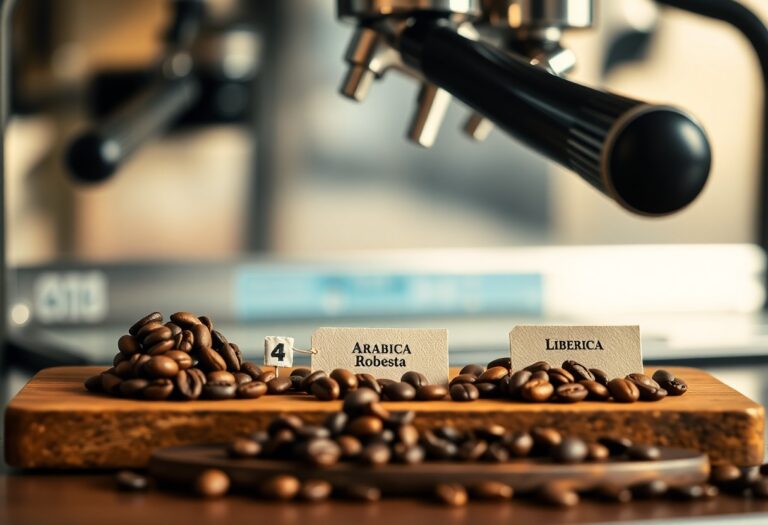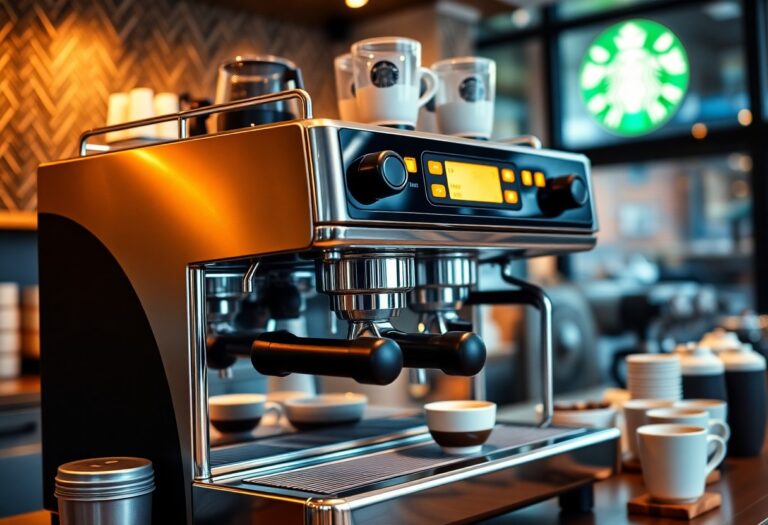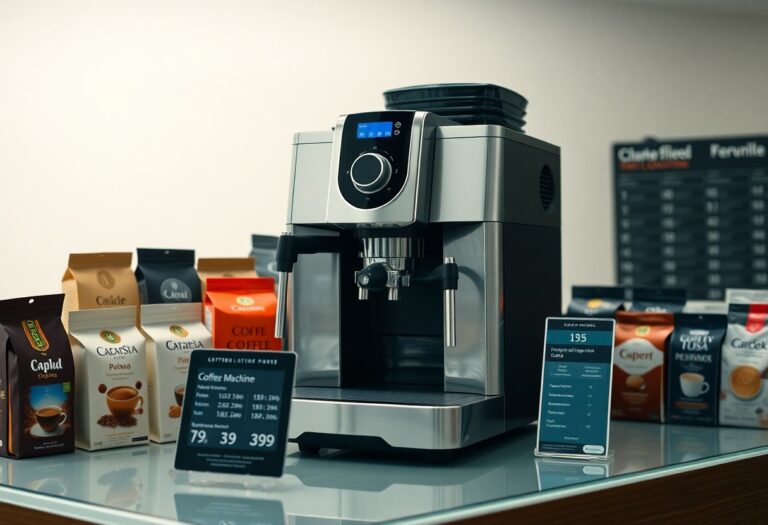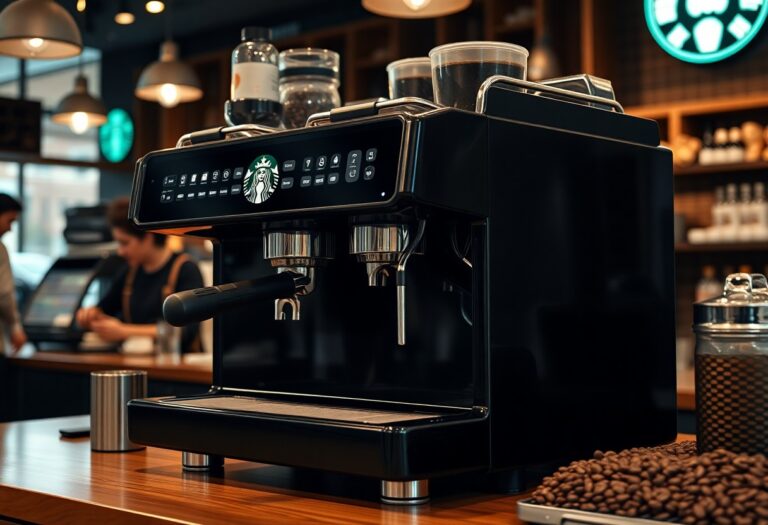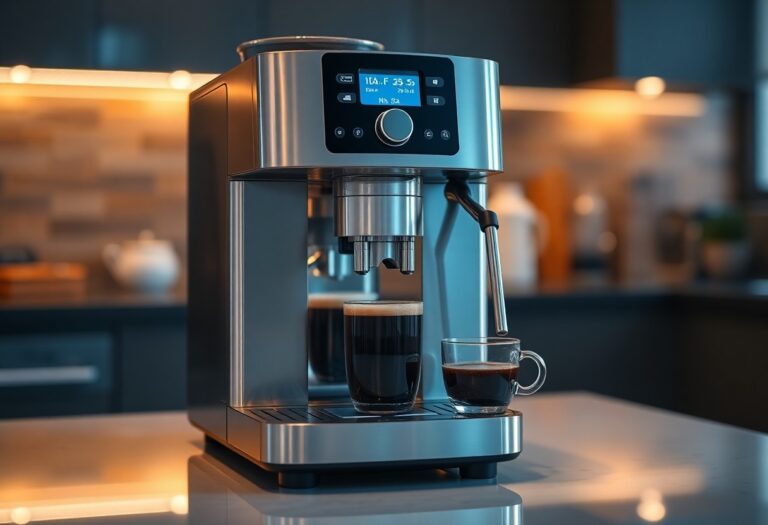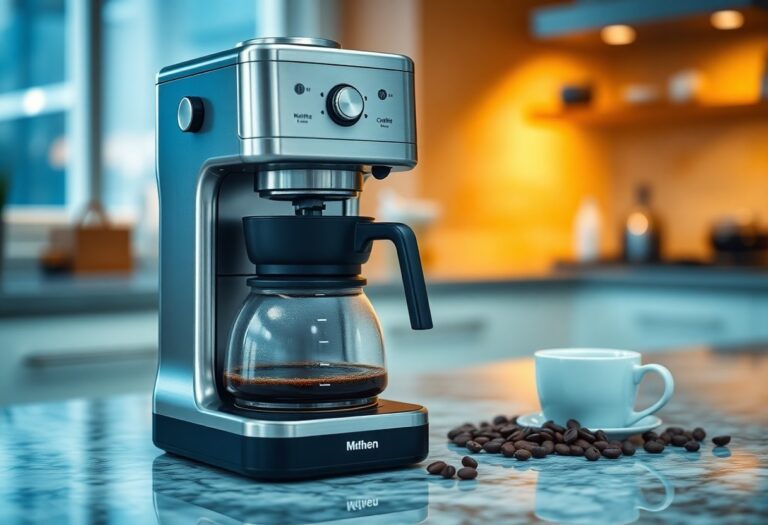What is the Best Coffee for an Espresso Machine – Premium Beans
Coffee enthusiasts know that the quality of beans you choose can significantly impact your espresso experience. When shopping for premium beans for your espresso machine, consider origin, roast level, and freshness as key factors in achieving that perfect shot. Opting for high-grade Arabica or blends that offer a balance of rich flavor and acidity will enhance your brew. In this guide, we will explore the best options available to elevate your espresso and provide you with tips on selecting the finest beans tailored for your taste preferences.
Key Takeaways:
- Choose beans with a medium to dark roast profile to enhance the rich flavors typically desired in espresso.
- Look for single-origin beans to experience distinct taste notes that can enhance your espresso experience.
- Freshly roasted beans are necessary; aim to use beans roasted within the last two to three weeks for optimal flavor.
- Pay attention to the grind size, as a fine grind is necessary for proper extraction in espresso machines.
- Experiment with different bean blends to find the perfect balance of acidity, body, and sweetness that suits your palate.
Beans That Elevate Your Espresso Game
To truly elevate your espresso experience, the selection of coffee beans is vital. Look for beans that strike a balance between acidity, body, and richness. Premium choices often come from renowned regions and are meticulously processed to enhance their flavor profiles. For a detailed guide on selecting premium beans for your espresso machine, check out Best Coffee Beans For Espresso. Kev’s 2025 UK Reviews.
Arabica vs. Robusta: The Flavor Showdown
Arabica and Robusta beans offer distinct flavor profiles that cater to different palates. Arabica beans are celebrated for their sweet, complex notes, often featuring hints of fruit and floral undertones, whereas Robusta beans provide a more bitter taste, with earthy and woody characteristics. The choice between the two can significantly alter your espresso, determining not only taste but also crema quality.
The Influence of Origin: Terroir’s Role in Taste
The origin of your coffee beans is integral to their flavor. Beans grown in various regions exhibit unique characteristics influenced by climate, soil, and altitude. For example, Ethiopian beans often have bright acidity and fruity notes due to the high altitude and varied climates, while Brazilian beans typically present a nutty flavor with chocolate undertones, owing to their milder growing conditions. This geographical diversity means that exploring different origins can lead to exciting new flavor discoveries in your espresso.
Delving deeper into the effects of terroir, consider that the specific microclimates and agricultural practices within a region can further enhance the distinct flavors your espresso can exhibit. For instance, single-origin coffees from regions like Colombia might bring forth nuances of caramel, while those from Sumatra may boast deep, earthy flavors. Understanding these variations empowers you to select beans that align with your personal taste preferences,.

How Roast Levels Transform Your Brew
The roast level of coffee beans plays a pivotal role in determining the flavor profile of your espresso. While lighter roasts often highlight the inherent acidity and brightness of the bean, darker roasts tend to introduce bittersweet notes and richer body. Understanding these differences allows you to choose beans that align with your personal taste preferences and the characteristics you seek in your espresso. Thus, experimenting with various roast levels is key to unlocking the full potential of your espresso machine.
Light Roast: Bright Notes and Shifted Acidity
Lightly roasted beans maintain their distinctive origin characteristics, often showcasing vibrant acidity and fruity notes. This roasting method preserves the important oils and can result in a lively cup that is nuanced and aromatic. The crispness of a light roast can lead to a refreshing espresso experience, drawing out unique flavors that reflect the bean’s origin.
Medium to Dark Roast: Balancing Complexity and Boldness
A medium to dark roast creates a rich and well-rounded espresso that balances the brightness of acidity with the depth of chocolatey and caramelized flavors. This roasting level often enhances the body of the brew and introduces more pronounced sweetness, making it easier to pair with milk or enjoy black. The intricate combination of flavors creates a satisfying experience for your palate, appealing to those who appreciate both strength and nuance in their coffee.
This balancing act between flavors takes on even greater significance when brewing with an espresso machine. The brewing process emphasizes the extraction of soluble compounds, leading to a full-bodied shot that highlights the intricate flavors developed during roasting. The ideal medium to dark roast typically features flavors like toffee, dark chocolate, and sometimes even smoky notes, providing a comforting, familiar taste that many espresso lovers cherish. When dicking out your beans, consider how these depth and complexity elements can enhance your espresso experience, allowing you to indulge in the perfect cup.
The Art of Selecting Freshness
Freshness is pivotal in elevating your espresso experience. When you choose coffee beans, consider roast dates over the packaging date, as the former indicates the point at which the beans reached their flavor peak. Aim to use beans that have been roasted within the past two to four weeks. This approach ensures you capture the full aroma and nuanced flavors that fresh beans offer, significantly impacting the quality of your espresso.
Importance of Freshly Roasted Beans
Freshly roasted beans offer a vibrant taste profile that can make or break your espresso. With time, coffee loses its imperative oils and aromatic compounds, dulling flavors and complexity. Enjoying espresso made from beans roasted just weeks prior allows you to experience the rich flavors and textures that these beans have to offer, enhancing your overall brewing experience.
Packaging and Storage: Maximizing Shelf Life
Proper storage of coffee beans can significantly extend their shelf life and preserve their freshness. Opt for beans packaged in an airtight container or a bag that features a one-way valve to allow for gas release without letting oxygen in. Store your beans in a cool, dark place, away from heat sources and moisture, which can compromise their quality. As a guide, coffee beans are best enjoyed within two months of their roast date.
Choosing the right packaging for your coffee can greatly influence its longevity. Using vacuum-sealed bags is one of the best options, as it minimizes air exposure and helps prevent staleness. Investing in a high-quality airtight container with a carbon-filtered lid can further optimize storage conditions. Additionally, avoiding clear containers is wise, as sunlight can degrade coffee quality over time. Following these storage tips will ensure that your beans maintain their rich flavors and aromas for as long as possible, allowing you to consistently brew that perfect shot of espresso.
Brewing Techniques to Optimize Flavor
Optimizing the flavor of your espresso involves mastering various brewing techniques that enhance the coffee’s natural characteristics. Adjusting variables such as brewing time, pressure, and temperature can elevate your espresso experience significantly. For more insights on which popular coffee brands work best for an espresso, you’ll find that each plays a role not just in taste, but in how these elements can be fine-tuned for the perfect cup.
Grind Size and Its Impact on Extraction
The grind size of your coffee beans directly influences the extraction process during brewing. A finer grind increases the surface area, leading to a quicker extraction, which is important for espresso. If the grind is too coarse, the result can be under-extracted and sour. Conversely, too fine a grind may result in over-extraction, producing bitterness. Maintaining a consistent grind size allows you to achieve the rich, balanced flavors that define an excellent espresso.
Water Quality: The Often-Overlooked Ingredient
The quality of the water used in brewing has a substantial impact on your espresso’s flavor profile. Tap water with high mineral content, chlorine, or other impurities can alter the taste, masking the notes inherent in your coffee beans. Ideally, you should use filtered water to ensure that your espresso showcases its true flavors without interference.
Investing in high-quality water can dramatically improve your espresso’s taste. Water comprises about 90% of a shot of espresso, making it a considerable factor when seeking a clean and vibrant flavor. If possible, using bottled spring water or a filtration system can help minimize unwanted tastes and enhance the extraction process. Always check the mineral content in your water to find the ideal balance, as certain minerals like calcium and magnesium can enhance extraction and flavor development. A little attention to water quality goes a long way toward brewing the perfect espresso.

Expert Recommendations: Top Premium Beans for Espresso
Choosing the right premium beans for your espresso machine can make all the difference. Look for brands like Intelligentsia and Blue Bottle, known for their exceptional sourcing and roasting practices. Consider single-origin beans from regions like Ethiopia or Colombia that provide a unique flavor profile and complexity. For a balanced cup with hints of chocolate and caramel, try Lavazza Super Crema. Each of these choices showcases a commitment to quality, ensuring a memorable espresso experience.
Roaster Highlights: Where to Find Your Beans
Your journey for premium espresso beans can lead you to acclaimed roasters such as Stumptown or Counter Culture. Both brands offer a wide variety of beans with distinct flavor notes and profiles. You can often find their products online or at local specialty coffee shops, empowering you to explore diverse offerings right at your doorstep. Freshness is key, so opt for beans that have been recently roasted.
Tasting Profiles: Matching Beans to Your Preferences
Identifying your ideal espresso involves understanding the flavor notes present in different beans. You may prefer a bright and fruity cup from East African beans, or a richer, chocolatey flavor from South American varieties. The key is to sample various beans and take notes on the flavors you enjoy.
Exploring tasting profiles can enhance your espresso experience significantly. For instance, if you lean towards sweetness, beans with tasting notes of caramel and toffee from Central America will catch your attention. Alternatively, if you appreciate vibrant acidity and floral notes, Ethiopian Yirgacheffe beans should be on your radar. Engaging with these flavor profiles allows you to craft your perfect brew, ensuring each shot reflects your unique taste and preference in the world of espresso.
To wrap up
Drawing together the insights on selecting the best coffee for your espresso machine, you should focus on premium beans that match your personal taste preferences. Look for fresh, high-quality Arabica or a blend with a well-balanced profile, as this will enhance your espresso’s flavor and aroma. Experimenting with roast levels and origins can also elevate your brewing experience. Ultimately, the ideal coffee for your espresso machine is one that excites your palate and brings joy to your daily ritual.
FAQ
Q: What type of coffee beans are best for espresso machines?
A: For espresso machines, premium coffee beans such as Arabica and Robusta are highly recommended. Arabica beans tend to offer a smoother, more nuanced flavor, while Robusta beans provide a rich crema and a more full-bodied experience. A blend of both can often yield the best results, balancing sweetness and strength.
Q: Should I use light, medium, or dark roast beans for espresso?
A: Dark roast beans are typically preferred for espresso due to their bold flavor and reduced acidity. However, medium roasts can also be a good choice if you desire a more complex flavor profile. Light roasts may lack the robustness needed for a traditional espresso but can be used for those who enjoy brighter flavors.
Q: How fresh should coffee beans be for making espresso?
A: Freshness is important in achieving the best espresso. It is ideal to use coffee beans that have been roasted within the last two to four weeks. Grinding them just before brewing will also ensure that you capture the maximum flavor and aroma from the beans.
Q: What is the significance of grind size for espresso?
A: Grind size plays a vital role in the flavor extraction process of espresso. A fine grind is necessary to ensure that the hot water contacts the coffee grounds long enough to extract the rich flavors. However, if the grind is too fine, it can lead to over-extraction and bitterness, while too coarse a grind might result in weak coffee. It is necessary to find the right balance for the best espresso.
Q: Are there specific brands of premium coffee beans recommended for espresso?
A: Yes, several brands are known for their premium espresso beans. Some popular choices include Lavazza, Illy, and Stumptown. Specialty roasters like Blue Bottle and Intelligentsia also offer high-quality beans that are ideal for espresso. Choosing a brand you’re familiar with and enjoy can enhance your espresso experience.


